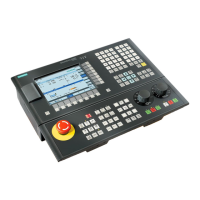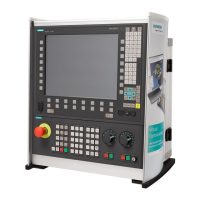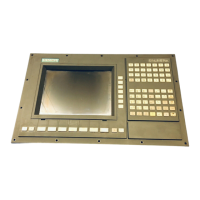Programming
2.3 Variables
Expanding the user interface
Commissioning Manual, 11/2006, 6FC5397-0DP10-0BA0
2-19
"Display in display"
You can insert further displays in the background (Help display), even as a function of the
values of variables.Like for softkeys you can assign a graphics file to a display field.
Examples:
● Short text field is overlaid with graphics:
DEF VAR1=(S///,"\\image1.bmp" ////160,40,50,50) ;Type S irrelevant
● Toggle field overlaid with graphics, the graphic being selected with a PLC flag byte:
DEF
VAR1=(IDB/*1="\\image1.bmp",2="\\image2.bmp"//,$85000/wr1//"MB[0]"//160,40,50,50)
The height of the displayed graphic (of the I/O field) is specified as the fourth parameter in
respect of the positions. You can also define bitmaps in fields (short text, I/O field).
See also
Search function for images (Page 6-14)
List of colors (Page A-5)
2.3 2.3 Variables
2.3.1 Variable properties
Variable value
The most basic property of a variable is its value.
The value of variables can be assigned by means of:
● Default settings when defining variables
● Assignment to a system or user variable
● A method
Programming
Syntax: Identifier val = Variable value
Identifier = Variable value
Description: Variable value val (value)
Parameters: Identifier: Name of the variable
Variable value: Value of variable
Example
VAR3 = VAR4 + SIN(VAR5)
VAR3.VAL = VAR4 + SIN(VAR5)
